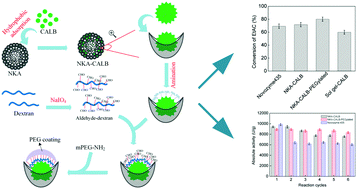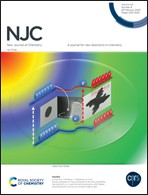PEGylation and macroporous carrier adsorption enabled long-term enzymatic transesterification
Abstract
Reactive distillation is a process intensification technology that combines a chemical reaction with distillation in a device. Enzymatic Reactive Distillation (ERD)—the application of immobilized enzyme catalysts instead of traditional acid–base catalysts in reactive distillation has attracted much attention due to its high selectivity and mild process conditions. However, to apply ERD to industrial processes, it is critical to address constraints such as the cost and stability of immobilized enzyme catalysts. Herein, in this paper, Candida antarctica lipase B (CALB) was immobilized in a commercial resin “NKA” by a hydrophobic interaction, and the immobilized enzyme was PEGylated by a series reaction. Both the stability and catalytic performance of the prepared NKA-CALB-PEGylated are significantly improved. The catalytic efficiency of NKA-CALB-PEGylated (80.1%) in the transesterification reaction system is slightly higher than those of NKA-CALB (71.7%) and Novozyme435 (69.3%), and significantly higher than that of Sol gel-CALB (60%) published in our previous literature. Additionally, NKA-CALB-PEGylated retained an initial activity of 92.4% after repeated use six times, which was significantly higher than those of Novozyme435 (60.2%) and NKA-CALB (78.6%). Therefore, the prepared stable and economical enzyme catalyst has great prospects for applications in the ERD industry.



 Please wait while we load your content...
Please wait while we load your content...